The next two coats for study were donated by styleforum's RSS, whom I thank, and they have an interesting connection. The first one we will look at was made by the Italian firm D'Avenza followed by a coat made by the English firm Chester Barrie.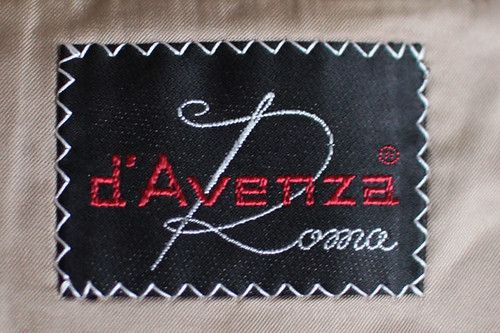
Backing up a bit in time, Chester Barrie was considered by many to be the best manufacturer of ready-to-wear tailored clothing in the world. According to a friend who worked for them at the time, they were importing a lot of Italian tailors to work in the UK; so many that they decided it would be far more cost-effective to set up a shop in Italy, and that shop was called D'Avenza (Paul was then sent to work at this factory in Italy). Both companies are now owned by different owners and are not as well-known as they once were, but both these coats are fairly old so we get an idea of what the factories were like in their heyday.
This coat was made by D'Avenza, for Gieves and Hawkes.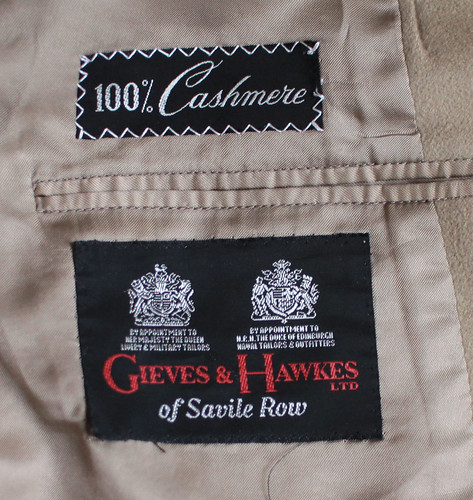
The row of machine-stitching on either side of the pocket is an indication that this pocket was done manually, as opposed to by automated machine- a very good sign.
The outer pockets were also done manually- note the lack of pocket jet. The pick stitching was also done by hand.
There is a single 3/8" pocket jet under the flap. The only other RTW maker that I know of who does this is Oxxford (another bit of trivia- one of the last designers to have worked at D'Avenza had previously worked at Oxxford in Chicago).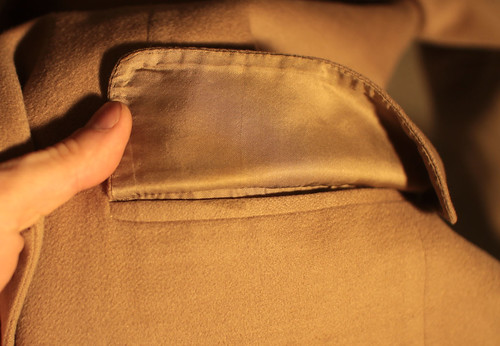
The buttonholes have been made by hand, and the top one was worked from both sides (another similarity to Oxxford).
These little cross-stitches on the side vent were done by hand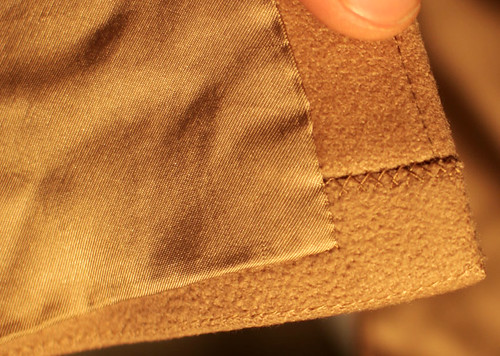
Although it is not immediately apparent when we look at the vent finishing,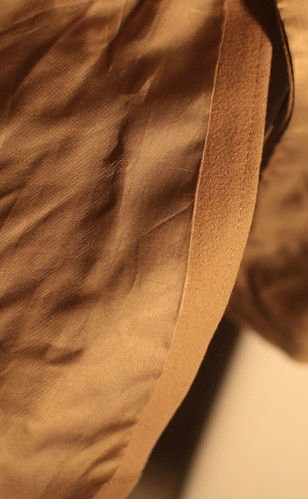
when I peel back the lining I see the little double-threaded felling
which, while done by machine, is another indication that this was a very well-made garment.
Getting into the coat, we see that the vent inlays and the hems were felled by hand, and that the vent has been stayed with a bias-cut strip of silesia.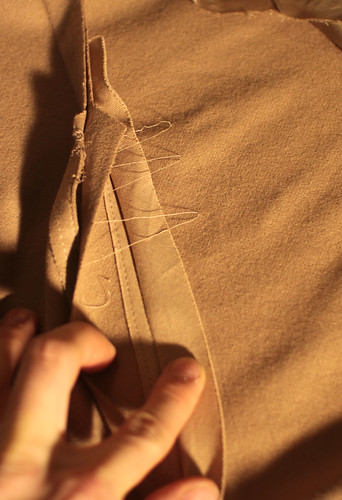
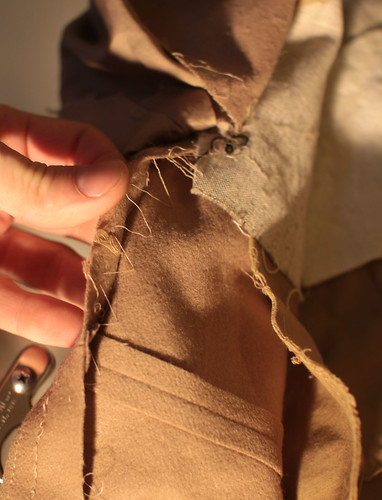
The sleeve head consists of what I call the "kotex" wadding plus two pieces of bias-cut canvas which have ben folded in half to reverse the direction of the hairline. The sleeve head has been inserted by hand, and the armhole has been tacked into the canvas by hand.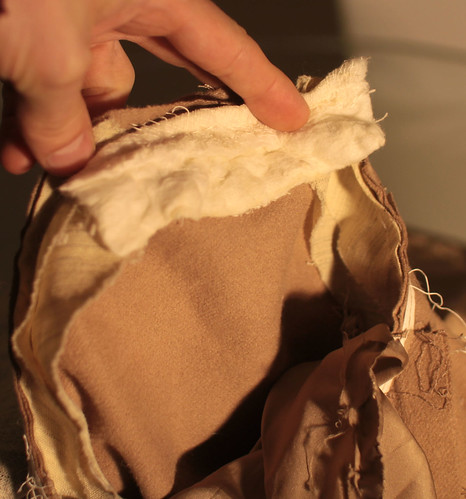
The front of the armhole seam allowance has been pressed open
but the back has not.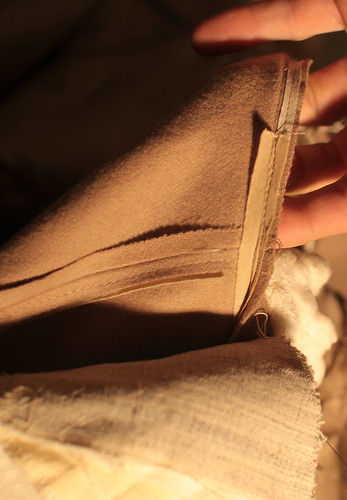
Note the bias-cut silesia stay that extends from the front of the armhole toward the back. The front of the shoulder has also been stayed with bias-cut silesia. In both cases it is not a true bias of 45 degrees but a partial, 15 degree bias, which holds the area better but still is elastic.
The large part of the chest piece has been cut from wool canvas instead of haircloth, which is interesting as this means the chest of this garment is softer than that of the A&S which I looked at. Note that the canvas has been cut away in the shoulder area.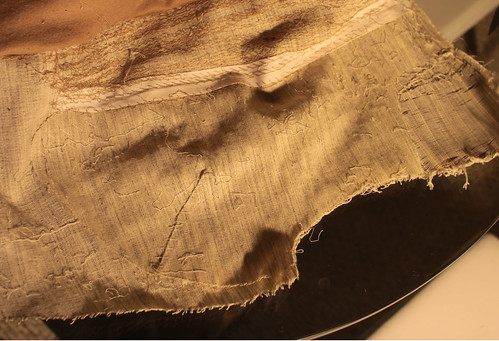
A first piece of straight-cut haircloth is found in the shoulder, with a 1" spread.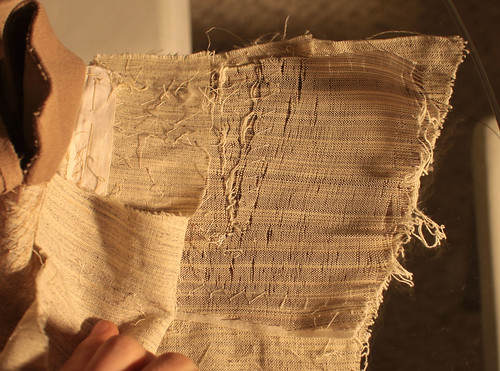
A second, bias-cut piece of haircloth is beneath the first.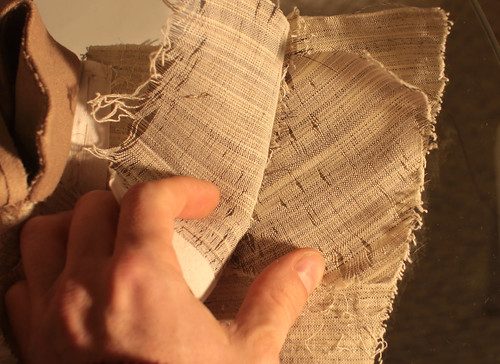
As is typical, the dart has been sewn using an extra piece of cloth to make pressing it cleanly much easier, and that extra piece of cloth is basted into the canvas after the first row of basting has been done to join the front to the canvas.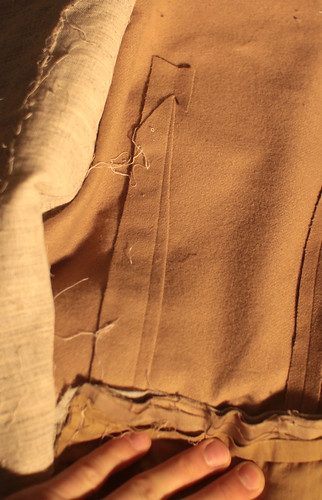
Next post we'll look at the Chester Barrie- it will be interesting to see how they differ and in what ways they are similar.








9 comments:
thank you for this. looking forward to the chester barrie post.
Fascinating as always. Very educational; thank you.
I look forward to the comparison. What is your thought on the overall quality of the construction and sewing techniques and their meanings? Are these techniques good? What are some alternative methods, etc. etc. Hope you are enjoying Chicago!
Glad you're back, thanks for the great tutorial, as always. Looking forward to the next installment. I too hope you are enjoying your new home.
sewsy
About the single jetted pockets, all but a few of my father's old Hart Schaffner & Marx suits have them. This is also from when they hand sewed their buttonholes.
Apologies if this is a dumb question, but what is silesia? In the photos, it looks like it might be a tightly woven cotton interfacing, like coutil, but I'm not sure.
Silesia is a smooth, tightly-woven cotton used for pocketing and staying certain areas of the garment.
J
D'Avenza house always made clothing for Gieves & Hawkes. So called expressly made!)
This is great info to know. I really like to be active Thanks for sharing.
Post a Comment